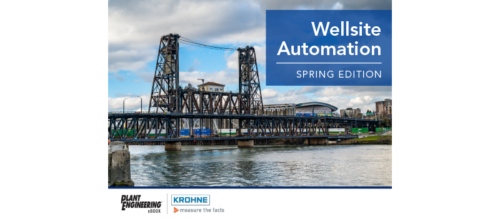Gas Technology: Finding help with energy projects
How do you pick the right resource to from hundreds of assistance programs?
“Where can I go for help with this energy project?” This question is asked many times by business managers and project engineers. Because of the federated-type governments of the U.S. and Canada, answers can be complicated and will vary from state to state, province to province. Further, most natural gas distribution companies have customer assistance programs, specialized rates and sometimes even project grants, but these vary from state to state, or even within certain economic incentive zones. They key is finding the opportunities, and then asking for help.
Project payback often critical
Typically, owners of commercial, institutional and industrial facilities decide whether to proceed with energy improvement projects based on simple payback – how many months or years it will take for the improvement to pay for itself. A payback in six months is relatively easy to sell: One taking eight or ten years is tougher unless the owner is quite sure the facility will still be in use at that time, and investment dollars are available. Even if the dollars are there, the energy project has to compete with other potential uses like process efficiency improvements or facility expansion plans.
Shortening the payback
Here’s where government and utility consulting and incentive programs can help shorten the payback. One example is interruptible gas rates. Many gas suppliers – both regulated distribution companies and third party suppliers – offer attractive rates for gas users who will agree to tolerate periodic interruptions of service. An example might be replacing an electric or oil-fired piece of equipment with a natural gas device on an attractive interruptible rate. Ask your gas supplier about interruptible rates, and get details on exactly what your commitment would be. Some suppliers use the service interruption very infrequently but offer a significant discount. This could further shorten the energy improvement project payback.
Another possibility is actual incentive payments from federal or state energy or environmental agencies, or from your utilities themselves. These incentive programs are intended to encourage owners to take energy improvement steps now rather than waiting. Programs include direct grants, tax credits, financing assistance and project engineering assistance.
Finding current incentives
Programs are numerous, but are constantly changing so it’s important to know you are acting on current program requirements. Often your project engineer or your utility customer representative can help you find these. Another great resource for U.S. owners searching for help is this website:
https://energy.gov/eere/femp/energy-incentive-programs
Canadian owners can similarly benefit from this website:
https://www.nrcan.gc.ca/energy/funding/efficiency/4947
These resources summarize federal, state, provincial and utility incentive programs for improving facility energy efficiency. Payback should not be the only criterion for embarking on a facility energy efficiency project. Such projects may also improve your compliance with present or future environmental regulation, and may increase your energy supply security status. If you are considering embarking on such a program and are looking for a partner, your own gas utility, along with the website tools shown above, may be the right place to put in your shovel.
More information:
Small Business Administration Energy and Environmental Grants and Loans
https://www.sba.gov/content/environmental-grants-loans
U.S. Environmental Protection Agency Green Building Requirements
https://www.epa.gov/oaintrnt/projects/requirements.htm
This article originally appeared on Gas Technology Spring 2015 issue.
Original content can be found at Oil and Gas Engineering.
Do you have experience and expertise with the topics mentioned in this content? You should consider contributing to our CFE Media editorial team and getting the recognition you and your company deserve. Click here to start this process.


